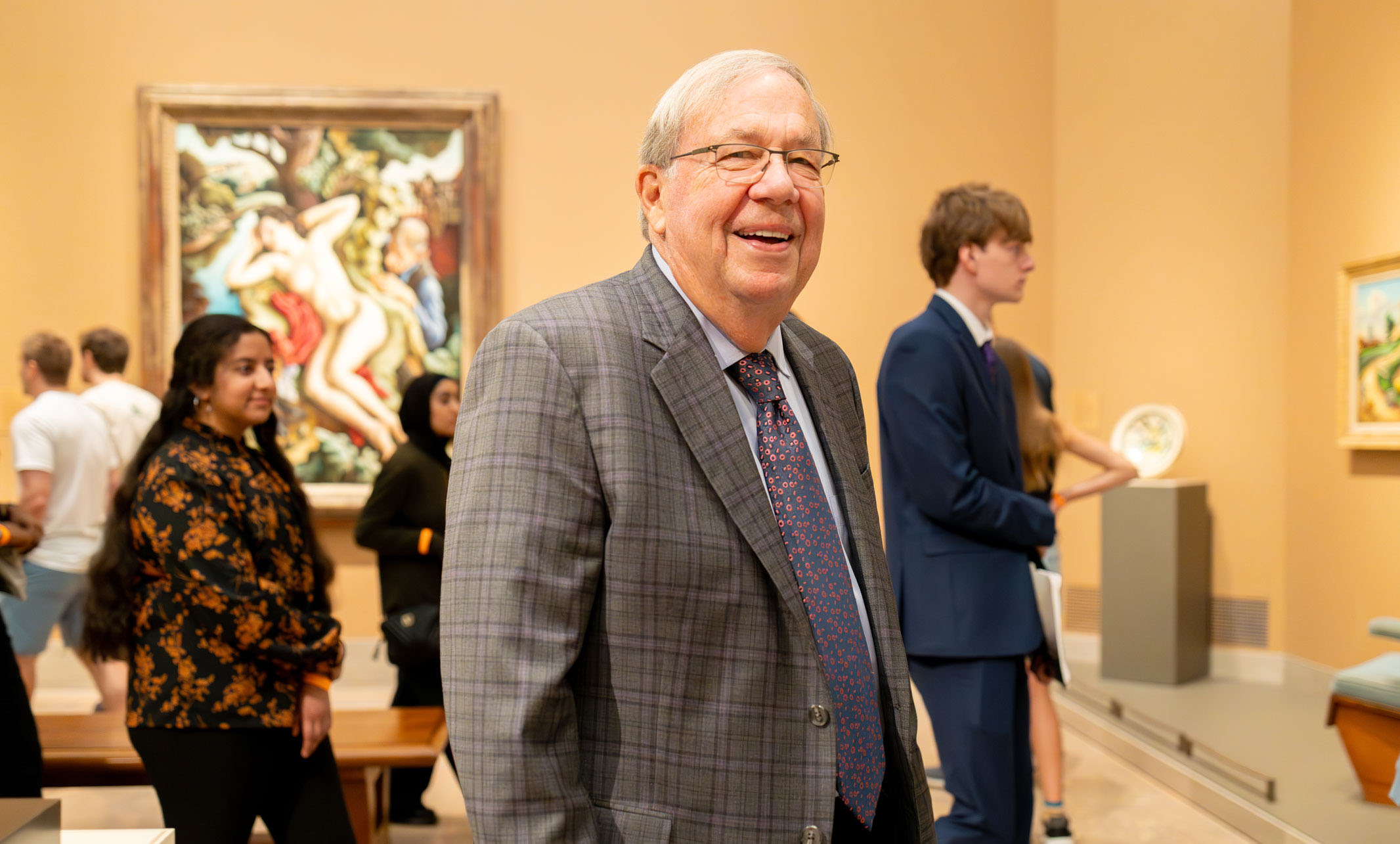William Ritter, M.D., (M.A. ’18), looks at a painting or a sculpture of the human body by Michelangelo or Leonardo Da Vinci and sees more than a famous work of art. He sees a history of medicine. Every year, he shares his insights with students at the UMKC School of Medicine, describing the intersection of art and medicine and how one has spurred the other throughout the centuries.
“There’s a lot of commonality between art and medicine,” Ritter said. “Just go to Michelangelo and Leonardo -- they were the first anatomists. You go back and look at a lot of their paintings, it’s all anatomy. They were the first ones to dissect the human body, so the Renaissance is really the birth of anatomy, the birth of everything: art, the liberal arts. Art history is really the crux of early medical studies, medical thinking, dissections, and it keeps going on and on.”
This Fall, Ritter, who also holds a master’s degree in art history from UMKC, begins his sixth year in the School of Medicine’s Sirridge Office of Medical Humanities and Bioethics as course director of an elective in medicine and the visual arts. He also teaches the class in the Spring, and serves as a docent for first- and second-year medical students.
“We try to make it interesting,” Ritter said. “We give them a little medicine and how it ties to art history. I give them a lot of art history, actually, because I like doing it, and it’s a nice variation. It’s a way to do both art and medicine and get away from just medicine.”
School of Medicine Dean Mary Anne Jackson, M.D., said Ritter’s work is an ideal example of what Marjorie and Bill Sirridge, two of the school’s founding docents, envisioned when they endowed the office in 1992 to expand humanities course offerings for both premedical students and students in UMKC’s six-year B.A./M.D. program.
“I am so grateful for Dr. Bill Ritter, whose work at our School of Medicine embodies the vision of the Drs. Sirridge,” Jackson said. “Early clinical experience in medicine is foundational to our school, and as a Year 1 and 2 docent, Dr. Ritter teaches our students the fundamentals of medicine, but also allows them to experience the human side of medicine through the arts.”
Ritter realized his interest in art and art history while he was in school. But studying to become a doctor took precedence, and college electives in art history gave way to courses leading to a degree in chemistry, followed by medical school. Ritter graduated from Philadelphia’s Sidney Kimmel Medical College, Thomas Jefferson University in 1971. He trained in internal medicine at Emory University, followed by a cardiology fellowship at the University of Texas Southwestern.
“There wasn’t much art when I was in medical school for sure,” Ritter said.
But his passion for art never waned, even after he became entrenched in a career as a cardiologist. One night before dinner with friends, a member of the group, who also happened to be a guide at Kansas City’s Nelson-Atkins Museum of Art, took everyone on a tour of the museum. Ritter was immediately intrigued.
“My eyes really lit up,” he said. “I said, ‘I’d like to show off Monet, stand there with a Monet and tell everybody about it and what I know about it.’ I thought that was really cool. So I ended up joining the Nelson as a museum guide (in 2008).”
For nearly 10 years, Ritter walked the hallways of the Nelson-Atkins and the Kemper Museum of Contemporary Art on weekends and evenings as a guide and docent, sharing his love and knowledge of the fine arts with the museums’ visitors.
Several years ago, Ritter and his practice partner sold their cardiology practice after 30 years. With some free time, he decided to dive deeper into his art interest. Ritter went to the UMKC Fine Arts building, where he met art history professor Burton Dunbar, who would become a close friend and mentor. Over the next 2 1/2 years, Ritter studied art history, earning his master’s degree in 2018.
He began at the School of Medicine five years ago developing the arts and medicine course and serving as a docent, a role that allows him to introduce medical students to their earliest patient encounters.
“I’d never done much teaching before — a little bit clinically — but nothing formal,” Ritter said. “It turned out, I think maybe it was my calling. Maybe I should have been doing this sooner.”
His passion for teaching, just like his love for art history, blossomed, and two years ago medical students honored Ritter with the Outstanding Years 1 and 2 Docent Award, given annually by students to one instructor for his or her pursuit of teaching excellence in medicine.
“I think I have a natural interest in teaching students,” Ritter said. “That’s what helps in getting along with students and being successful. You’ve got to be one of them.”

